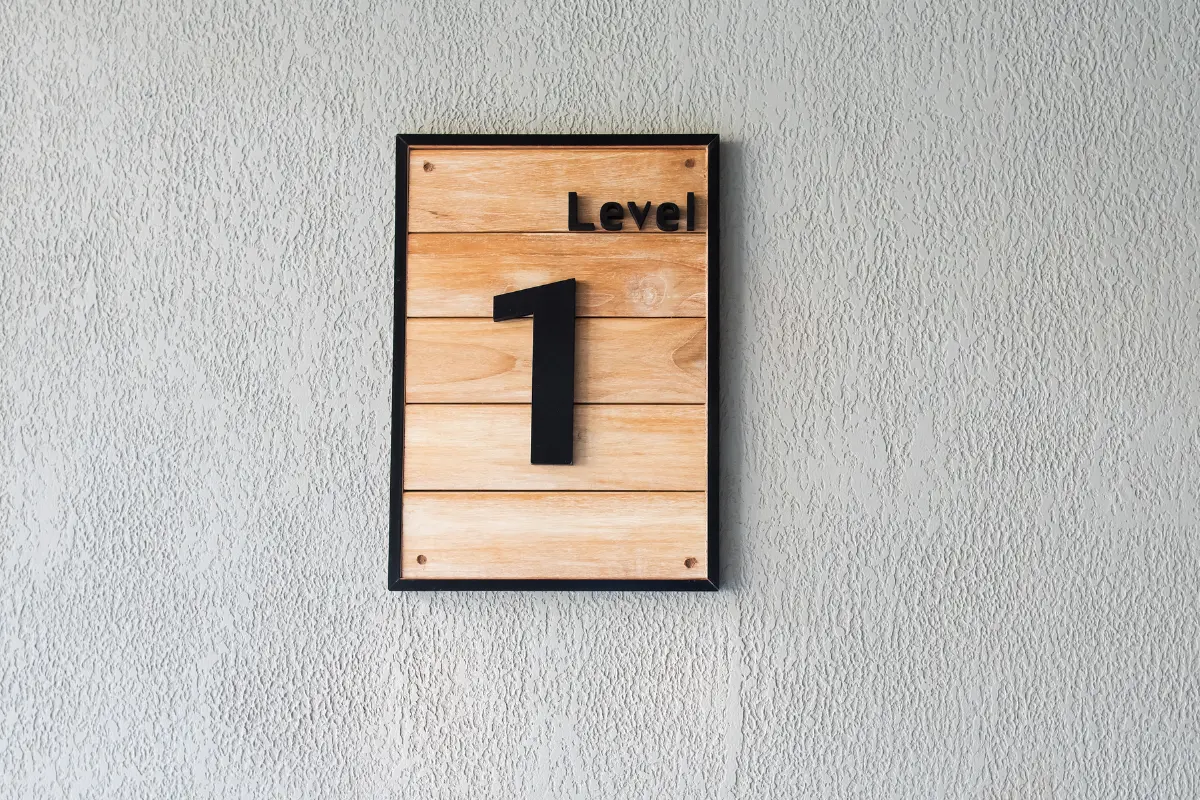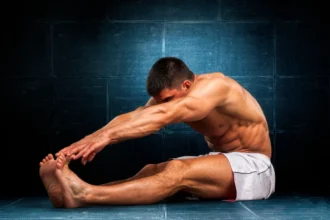In the United States, the USA Gymnastics (USAG) Women’s Development Program outlines Levels 1 through 10 for female gymnasts. Level 1 is the introductory stage, typically suited for young learners (ages 4–6) but also appropriate for any beginner. The focus is on teaching body shapes, basic coordination, and safety, all while instilling confidence and enjoyment in the sport.
Here’s a comprehensive overview of the Level 1 gymnastics skills across all four apparatuses: Vault, Beam, Bars, and Floor.
Vault
Vaulting is one of the four core events in women’s artistic gymnastics. At Level 1, it serves as an introduction to the sport’s fundamental skills, focusing on building strength, coordination, and confidence.
Vault Skill Requirements for Level 1
The key components of the Level 1 vault in USA Gymnastics (USAG) are detailed in the official guidelines provided by USAG Region 2. These components include:
- Stretch Jump onto a Raised Mat Surface (Minimum 16 inches): Gymnasts perform a stretch jump from the springboard, aiming to land with a straight body position on a raised mat.
- Kick to Handstand: After landing the jump, gymnasts kick into a handstand position, maintaining straight arms and legs.
- Fall to Flat Back: From the handstand, gymnasts execute a controlled fall to a straight-lying position on their back.
Each phase of the vault is evaluated separately, with a maximum score of 5.0 points per phase. The gymnast may perform the vault twice, with the highest total score from the two attempts counting towards the final score. A maximum of three attempts are permitted, with one balk allowed without penalty. A fourth attempt is not permitted.
Evaluation Criteria
Judges assess the Level 1 vault based on specific criteria:
- Run and Hurdle: Proper acceleration and form leading to the springboard.
- Jump Execution: Height, body position, and control during the stretch jump.
- Handstand Alignment: Achieving a vertical handstand with straight arms and legs.
- Fall Technique: Safe and controlled landing on the back.
Execution errors such as bent legs, separated legs, or incorrect foot form can result in deductions.
Balance Beam
The balance beam is one of the most graceful yet challenging apparatuses in gymnastics. At Level 1, gymnasts focus on building confidence, balance, and control on this narrow 4-inch-wide beam. While the skills are foundational, they are crucial for progression in the sport.
Required Skills for Level 1 Beam
A Level 1 beam routine must include the following skills:
- Jump to Front Support Mount: The gymnast jumps onto the beam and lands in a front support position.
- Arabesque to 30°: A balance pose where the gymnast lifts one leg behind her to a 30° angle while maintaining a straight body alignment.
- Needle Kick: A dynamic movement where the gymnast kicks one leg backward and upward, aiming to achieve a straight line from the hands to the toes.
- Relevé Lock Stand: The gymnast rises onto the balls of her feet (relevé) and holds a locked position, demonstrating balance and control.
- Stretch Jump: A jump where the gymnast extends her body fully, reaching for maximum height while maintaining a straight body position.
- Cartwheel to 3/4 Handstand Dismount: The gymnast performs a cartwheel and finishes in a 3/4 handstand position before dismounting from the beam.
These skills are designed to build confidence and proficiency on the beam, setting the stage for more complex movements in higher levels.
Balance Beam Evaluation Criteria
Judges evaluate Level 1 beam routines based on several key factors:
- Mount and Dismount: Executing the mount and dismount with control and precision.
- Balance and Posture: Maintaining balance throughout the routine, with proper posture and alignment.
- Skill Execution: Performing each skill with correct technique, including body position, arm and leg alignment, and control.
- Artistry: Demonstrating fluidity and confidence in movement, with appropriate expression and presentation.
Deductions are applied for any errors in these areas, with specific point reductions outlined in the evaluation guidelines.
Uneven Bars
In Level 1 gymnastics, the uneven bars serve as an introduction to essential skills that form the foundation for more advanced routines. At this stage, gymnasts focus on developing upper body strength, coordination, and body control. The routines at this level are designed to be simple yet effective in building the necessary skills for progression.
Uneven Bars Skill Requirements for Level 1
Level 1 routines on the uneven bars are performed on the low bar and include the following elements:
- Pullover: The gymnast begins from a hanging position and pulls herself over the bar to a front support position. This skill develops upper-body strength and coordination.
- Cast: From a front support, the gymnast swings her body backward and then forward, lifting her hips to a handstand position. This movement enhances shoulder strength and body control.
- Back Hip Circle: Starting from a front support, the gymnast swings her legs backward and around the bar, returning to a front support position. This skill improves swinging technique and body awareness.
- Underswing or Solo Circle Dismount: The gymnast swings backward under the bar and then forward to land on her feet. This dismount teaches timing and control.
Uneven Bars Evaluation Criteria
The Level 1 uneven bars routine includes skills such as the pullover, cast, back hip circle, and a sole-circle or underswing dismount. Judges assess:
- Execution: Proper technique in each skill, including body position, arm and leg alignment, and control throughout the movements.
- Swing Technique: Maintaining rhythm and continuous motion during the routine.
- Dismount: Performing a controlled and precise dismount, landing with balance and proper posture.
Deductions are applied for any deviations from the required execution standards, with specific point reductions detailed in the evaluation guidelines.
Floor Routine
In Level 1 gymnastics, the floor exercise serves as a foundational event where young gymnasts develop essential skills in tumbling, balance, and coordination.
Required Skills for Level 1 Floor
At Level 1, gymnasts are expected to perform a floor routine that includes the following skills:
- 3/4 Handstand: A brief inversion where the gymnast kicks into a handstand position and then returns to the floor.
- Cartwheel: A sideways handspring that requires balance and coordination.
- Backward Roll: A backward somersault performed from a squat position, rolling over the shoulders and landing on the feet.
- Forward Roll: A forward somersault performed from a standing position, rolling over the head and landing on the feet.
- Stretch Jump: A vertical jump with straight legs and pointed toes, demonstrating explosive power and body control.
These skills are fundamental movements that form the basis for more complex routines in higher levels. Mastery of these elements is essential for progression in the sport.
Routine Composition and Timing
Level 1 floor routines are typically performed to music and last up to 90 seconds. The routine should be choreographed to include the required skills, ensuring smooth transitions and maintaining rhythm throughout. While artistry and expression are not heavily emphasized at this level, gymnasts are encouraged to demonstrate enthusiasm and confidence.
Floor Exercise Evaluation Criteria
Judges assess the Level 1 floor routine based on specific criteria:
- Execution: Proper technique and form in each skill.
- Timing: Synchronization with the music and appropriate pacing.
- Artistry: Expression and presentation, including facial expressions and body movements.
- Use of Space: Effective utilization of the floor area without stepping outside the designated boundaries.
Deductions may be taken for issues such as lack of control, poor form, or failure to perform required elements.
Progressing to the Next Level
Once gymnasts become proficient in their Level 1 skills, they will be ready to move on to Level 2, where they will refine their basic skills and begin performing more complex routines. However, progression through the levels requires a combination of consistent practice, a positive attitude, and determination.
Some key factors that influence progression include:
- Consistent practice and mastery of Level 1 skills.
- Improvements in flexibility, strength, and coordination.
- A willingness to learn and listen to coaching feedback.
In summary, level 1 gymnastics focuses on building the fundamental skills necessary for young athletes to develop strength, flexibility, coordination, and body awareness. These foundational skills across various apparatuses provide a solid base for progression to higher levels in the sport.













